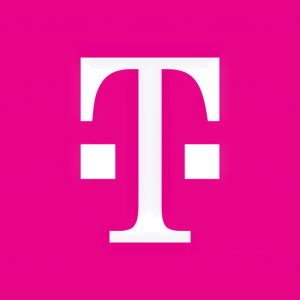T-Mobile First to Roll Out Cutting-Edge 911 Capabilities
In an emergency, every second counts. That’s why T-Mobile (NASDAQ: TMUS) is launching new 911 capabilities – Location-Based Routing and Next Generation 911 connectivity over IP – two critical advancements that can speed up emergency response times by helping pinpoint the location of callers, reducing the need for call transfers, and enabling a more efficient and effective 911 communication system.
"As the Un-carrier we innovate and push the wireless industry forward with technology firsts like this for the sake of consumers everywhere. Nowhere is that more important than driving improvements in public safety,” said Neville Ray, President of Technology at T-Mobile. “Our advanced LTE and nationwide 5G network positions us better than any other operator to quickly and more accurately deliver emergency calls to Next Generation 911 systems. And that, simply stated, will make people safer.”
Location-Based Routing
Location-Based Routing (LBR) significantly cuts the need for 911 call transfers by leveraging low latency device-based location technology. That allows the network to connect more 911 callers directly to the appropriate 911 call center, saving precious time. In fact, T-Mobile says some areas with LBR enabled have experienced up to 40 percent fewer call transfers. LBR is currently enabled in parts of Texas and Washington State, and T-Mobile is working with 911 authorities to expand the capability nationwide.
Next Generation 911
Next Generation 911 (NG911) brings emergency communications into the future, transitioning 911 to a state-of-the-art all-IP-based system. That means a more seamless flow of information from your phone to 911 telecommunicators and first responders all while improving the system’s ability to manage call overload, natural disaster response, and interoperability between jurisdictions. NG911 also paves the way for future forms of communications. Alert systems like crash detection will become more effective, sending notifications and actionable data directly to 911 dispatchers instead of third parties. T-Mobile has established some level of NG911 connectivity in all or part of Delaware, Massachusetts, Michigan, New Hampshire, North Carolina, Pennsylvania, South Carolina, Virginia, and Washington state, with plans to expand both NG911 connectivity and capability nationwide as public safety networks are ready.
The new capabilities are the latest in a series of moves from the Un-carrier aimed at improving public safety. Just last month, T-Mobile became the first major wireless provider to make the 988 emergency lifeline available to customers. T-Mobile customers in need of free mental health support can now get it immediately by dialing 988 on the T-Mobile network to be connected directly to the National Suicide Prevention Lifeline, a network of approximately 180 local- and state-funded crisis centers.
T-Mobile is America’s 5G leader, delivering 5G speeds in more places with the first and largest nationwide 5G network, and laying the groundwork for improved, more robust emergency communications across the country. T-Mobile’s Extended Range 5G already covers more than 270 million people across more than 1.4 million square miles. With Sprint now part of T-Mobile, the Un-carrier is extending its 5G lead, quickly lighting up Ultra Capacity 5G with technology that can deliver download speeds of 300 Mbps and peak speeds up to 1 Gbps.
For more information on T-Mobile’s network, visit t-mobile.com/coverage. And as always, follow T-Mobile’s Official Twitter Newsroom @TMobileNews to stay up to date with the latest company news.
5G coverage not available in some areas. Ultra Capacity 5G includes dedicated mid- and/or high-band 5G signals. T-Mobile’s Ultra Capacity 5G covers hundreds of cities and millions of people, with more added all the time; see t-mobile.com/5Glayers. Capable device required for 5G; coverage not available in some areas. Some uses may require certain plan or feature; see T-Mobile.com.
About T-Mobile
T-Mobile U.S. Inc. (NASDAQ: TMUS) is America’s supercharged Un-carrier, delivering an advanced 4G LTE and transformative nationwide 5G network that will offer reliable connectivity for all. T-Mobile’s customers benefit from its unmatched combination of value and quality, unwavering obsession with offering them the best possible service experience and undisputable drive for disruption that creates competition and innovation in wireless and beyond. Based in Bellevue, Wash., T-Mobile provides services through its subsidiaries and operates its flagship brands, T-Mobile, Metro by T-Mobile and Sprint. For more information please visit: https://www.t-mobile.com.
View source version on businesswire.com: https://www.businesswire.com/news/home/20201217005669/en/







